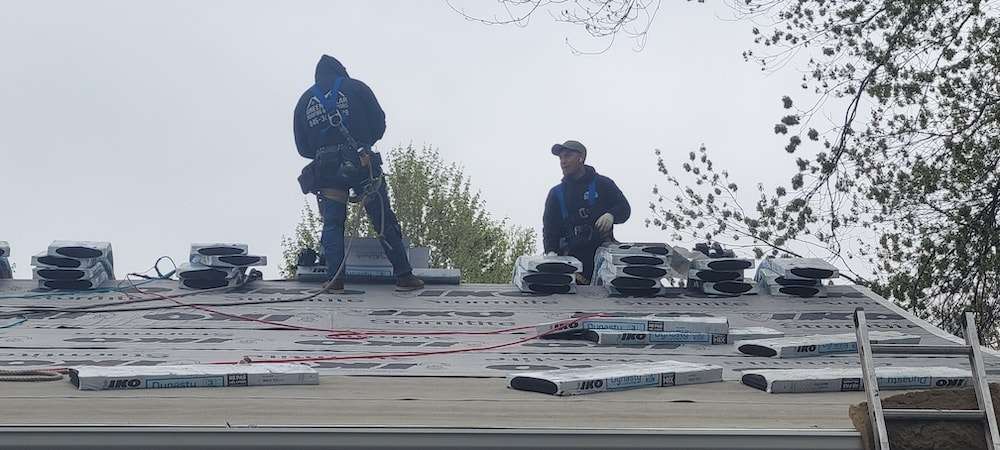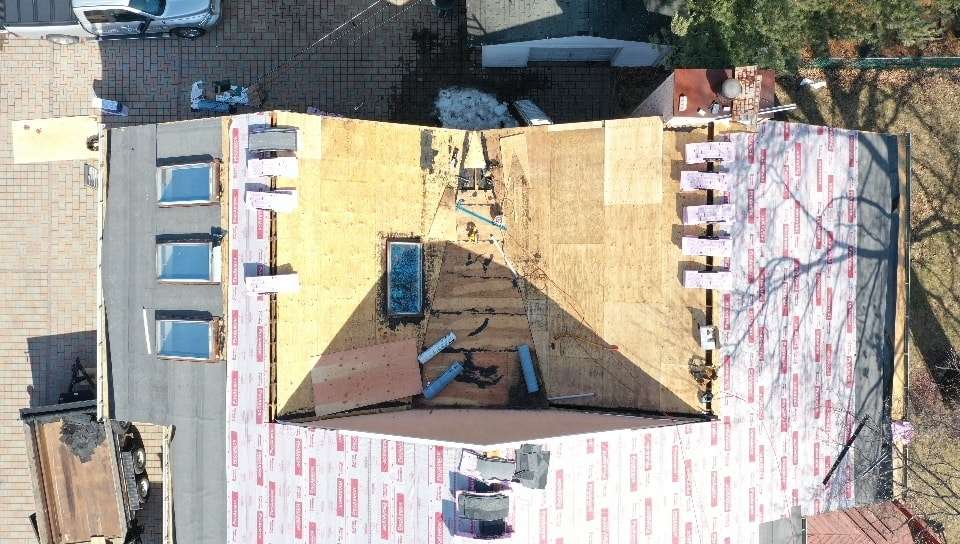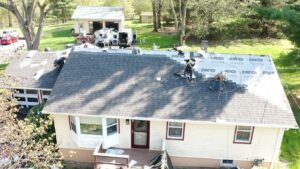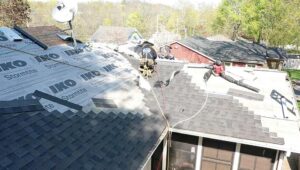By David Cohen, Green Collar Roofing & Exteriors.
In Roofing Terminology 101, we covered the basics of residential roofing, including roofing materials, components, structures, and key terms. Now, it’s time to take your roofing knowledge to the next level with Roofing Terminology 102. In this guide, we’ll delve deeper into some of the more complex and technical aspects of roofing, providing you with the information you need to make informed decisions about your roofing needs.

Roofing Materials
What is Synthetic Roofing?
Synthetic roofing, also known as composite or plastic roofing, is a relatively new roofing material made from a blend of plastics and rubber. It is designed to mimic the look of traditional roofing materials like wood, slate, and tile, but with the added benefits of durability, low maintenance, and energy efficiency.
What are Cool Roofs?
Cool roofs are roofing materials designed to reflect more sunlight and absorb less heat than traditional roofing materials. They are typically made from reflective materials like white or light-colored asphalt shingles, metal, or tile. Cool roofs can help reduce energy costs, improve indoor comfort, and mitigate the urban heat island effect.
What is Solar Roofing?
Solar roofing, also known as photovoltaic roofing, is a type of roofing material that generates electricity from the sun’s rays. It is typically made from solar panels or tiles that are installed over the roofing material. Solar roofing can help reduce energy costs, provide a source of backup power during outages, and contribute to a more sustainable energy future.
Roofing Components
What is a Ventilation System?
A ventilation system is an essential component of any roofing system, designed to regulate temperature and moisture levels in the attic or crawlspace. It typically consists of intake vents located at the eaves or soffits and exhaust vents located at or near the roof’s peak. A well-designed ventilation system can help extend the life of your roofing materials, reduce energy costs, and prevent moisture-related problems like mold and rot.
What is a Roof Pitch?
The roof pitch, also known as the roof slope, is the angle at which the roof slopes. It is typically expressed as a ratio of rise to run, such as 4:12 or 6:12. The roof pitch affects both the appearance and function of the roof, influencing factors like water runoff, attic space, and energy efficiency.
What is Roof Load?
Roof load refers to the amount of weight that the roof structure can support without collapsing. It includes both live load, such as snow or wind, and dead load, such as the weight of the roofing materials and the structural components. Understanding the roof load capacity is essential when selecting roofing materials and planning rooftop activities like HVAC installations or solar panel installations.
Roofing Structures
What is a Green Roof?
A green roof, also known as a living roof, is a type of roof that is partially or completely covered in vegetation. It typically consists of a waterproof membrane, a drainage layer, a growing medium, and a variety of plants. Green roofs can provide a range of benefits, including improved insulation, stormwater management, and biodiversity.
What is a Gambrel Roof?
A gambrel roof is a type of roof structure that features two distinct slopes on each side, with the lower slope steeper than the upper slope. It is commonly found in barns and other agricultural buildings, but can also be used in residential construction. Gambrel roofs offer increased attic space and a distinctive, classic look.
What is a Butterfly Roof?

A butterfly roof, also known as an inverted roof or V-roof, is a type of roof structure that slopes inward from two high points on opposite sides to meet at a low point in the center. This creates a distinctive, butterfly-like shape that can add visual interest to modern or contemporary homes. Butterfly roofs also allow for natural light and ventilation to enter the home through the center of the roof.
Roofing Terms
What is Uplift Resistance?
Uplift resistance refers to a roof’s ability to resist the upward force of wind during a storm. It is an important factor to consider when selecting roofing materials and components, particularly in areas prone to hurricanes or other severe weather events. Factors that affect uplift resistance include the roof’s design, the roofing material’s weight, and the quality of the installation.
What is a Roof Warranty?
A roof warranty is a guarantee from the manufacturer or installer that the roof will perform as expected for a certain period of time, typically between 10 and 50 years. Roof warranties can cover a range of issues, including defects in materials or workmanship, leaks, and other types of damage. It’s important to carefully review the terms and conditions of any roof warranty before making a purchase.
What is a Roof Inspection?

A roof inspection is a thorough examination of the roof and its components, typically conducted by a professional roofing contractor. Roof inspections are recommended at least once per year, as well as after severe weather events or other types of damage. A roof inspection can identify potential problems early on, allowing for timely repairs or replacement and preventing more extensive damage and costly repairs.
By expanding your knowledge of residential roofing terminology with Roofing Terminology 102, you can better navigate the complex world of roofing and make informed decisions about your roofing needs. Whether you’re a homeowner looking to upgrade your roof, or a first-time home buyer trying to understand the roofing process, understanding the technical aspects of residential roofing can help you achieve your goals and ensure the long-term health of your home.






